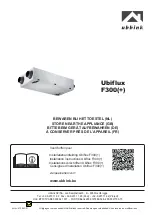
EcoSolar Energy Conscious Design Limited
44
A heat dump may be an external heat exchanger, such as a fin and tube located under the South
facing eaves or shaded under the solar collectors, hot water passes through the heat exchanger
transferring the heat to the surrounding air. Another option, especially suited when a hydronic
underfloor heating system is being installed, is to install a circuit in an outdoor area, such as under a
patio area. The excess heat is then provided to the underfloor heating system which directs it to the
heat dump circuit.
Drain back
These systems are common in Europe and many overseas markets whereby they provide an
excellent solution to both the overheating and freezing issues. The collectors selected for these
systems must be able to be exposed to these high temperatures without suffering damage. Many
collectors are therefore not able to be installed in such systems.
Solutions are available for installing a drainback system for low or mains pressure cylinders, these are
outlined below. One common factor to each installation is that the collectors and any pipework that
could be exposed to low or high temperatures should be fully free draining. Whilst the pump is
turned off there is no water in the collectors, there is then no risk of freezing in cold weather and no
risk of the system over heating in warm weather or during periods of low hot water demand. The
collector, as stated above, has to be selected to be able to cope with these high temperatures.
Low pressure drainback with header tank -
although becoming less common, there are still
installations where the hot water system is fed from a header tank located in a loft area. Provided the
solar collectors can be installed above the water level in the header tank and the system is installed
and commissioned properly the system should operate as follows. When there is a heat demand and
there is heat to gain from the collector, the pump is switched on, this draws water out of the cylinder,
which is replaced by water from the header tank, and pumped through the solar collector. When the
heat demand is satisfied or when there is no longer heat in the collector, the pump is switched off
and the water drains back to the cylinder. Care should be taken when selecting pumps for these
systems to ensure, sufficient pump head to prime the circuit and not too much flow that could result
in mixing within the cylinder.
















































